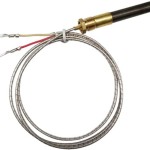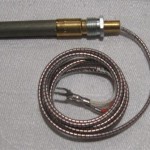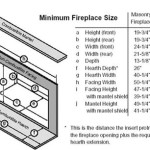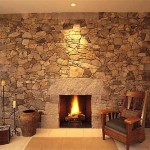The Enduring Appeal of Old Wooden Fireplace Surrounds
Old wooden fireplace surrounds possess a unique and timeless appeal, contributing significantly to the character and ambiance of a home. They represent a tangible connection to craftsmanship of the past, often showcasing intricate detailing and designs that are difficult to replicate with modern materials and techniques. These surrounds, often salvaged from older homes or carefully restored, offer a distinctive focal point, serving as a testament to enduring style and quality.
The value of an old wooden fireplace surround extends beyond its aesthetic qualities. It can also add significant value to a property, particularly if the surround is a rare or exceptional example of period craftsmanship. In many cases, these surrounds become a defining feature of a room, enhancing its overall charm and historical authenticity. The choice to incorporate an old wooden fireplace surround often reflects a conscious decision to embrace history and character, rather than opting for a more modern and often sterile alternative.
Historical Significance and Architectural Styles
One of the primary draws of old wooden fireplace surrounds is their association with specific historical periods and architectural styles. From the ornate carvings of the Victorian era to the clean lines of the Art Deco movement, each style reflects the prevailing tastes and design principles of its time. Researching the history of a particular surround can provide valuable insights into its origins, materials, and the techniques used in its construction. This historical context adds depth and interest to the piece, transforming it from a mere decorative element into a tangible link to the past. For instance, a surround featuring intricate floral motifs and delicate moldings might be characteristic of the Edwardian period, while a more geometric design might point to an Art Nouveau or early 20th-century origin.
The architectural style of the home itself is a crucial factor in selecting an appropriate old wooden fireplace surround. A grand Victorian home might benefit from a surround with elaborate detailing and rich, dark wood, while a more modest cottage might be better suited to a simpler, painted surround. Consideration should also be given to the scale and proportions of the surround in relation to the size of the room. A surround that is too large or too small can disrupt the balance of the space, detracting from its overall appeal. Careful consideration of these factors ensures that the surround complements the existing architectural features and enhances the overall aesthetic of the room.
Materials, Craftsmanship, and Restoration
The materials used in the construction of old wooden fireplace surrounds often contribute significantly to their value and appeal. Hardwoods such as mahogany, oak, and walnut were commonly used for their durability, grain patterns, and rich color. Softwoods, such as pine, were also used, particularly in surrounds that were intended to be painted. The choice of wood often reflects the availability of materials in the region where the surround was made, as well as the intended style and budget. Identifying the type of wood used in a surround can provide clues about its origin and age, and can also inform the restoration process.
The craftsmanship evident in old wooden fireplace surrounds is another key factor in their desirability. Many surrounds were handcrafted by skilled artisans who employed traditional woodworking techniques, such as carving, joinery, and molding. The level of detail and precision in these techniques can be truly remarkable, reflecting the expertise and dedication of the craftsmen who created them. Examining the joinery and carving details can reveal the quality of the craftsmanship and provide insights into the methods used in its construction. Any signs of exceptional craftsmanship, such as intricate carvings or perfectly executed joinery, can significantly increase the value and appeal of the surround.
Restoring an old wooden fireplace surround is a delicate process that requires careful consideration and expertise. The goal of restoration is to preserve the original character and integrity of the surround while repairing any damage or deterioration. This may involve cleaning, repairing cracks or splits, replacing missing pieces, and refinishing the surface. It is essential to use appropriate materials and techniques that are compatible with the original construction and finish. In some cases, it may be necessary to consult with a professional conservator to ensure that the restoration is carried out correctly and that the surround is not further damaged in the process. A well-restored surround can breathe new life into the piece, allowing its beauty and character to shine through for generations to come.
Integration into Modern Homes and Design Considerations
Incorporating an old wooden fireplace surround into a modern home requires careful consideration of design principles and the overall aesthetic of the space. While the surround is a historical element, it can be seamlessly integrated into a contemporary setting with the right approach. One key factor is to create a balance between the old and the new, allowing the surround to stand out as a unique feature without feeling out of place. This can be achieved by pairing the surround with modern furniture and decor, creating a visual contrast that highlights its historical character.
The color palette of the room is another important consideration. Depending on the style of the surround, it may be necessary to adjust the colors of the walls and furnishings to complement the wood tones and detailing. For example, a dark mahogany surround might be paired with lighter, neutral colors to create a sense of balance and prevent the room from feeling too dark. Conversely, a painted surround might be used to add a pop of color to a neutral room. The choice of colors should be carefully considered to ensure that the surround is integrated seamlessly into the overall design scheme.
Finally, the functionality of the fireplace should also be taken into account. If the fireplace is intended to be used for burning wood, it is essential to ensure that the surround is properly installed and meets all relevant safety codes. This may involve installing a fireproof hearth and ensuring that the chimney is properly ventilated. If the fireplace is not intended to be used for burning wood, it can be used as a decorative feature, perhaps with candles or a gas insert. Regardless of how the fireplace is used, it is important to ensure that the surround is visually appealing and contributes to the overall ambiance of the room.

Antique Victorian Carved Timber Fire Surround Architectural Heritage

Wooden Fire Surrounds Lassco England S Prime Resource For Architectural Antiques Salvage Curiosities

Oak Fire Surround Solid European Character Beam Reclaimed

Antique Timber Fireplace Surround For Victorian

Antique Wooden Fireplace Mantel Carved With Satyr And Columns 19th Century Italy For At 1stdibs Mantels Mantles Wood Surround

An Antique Wooden Fire Surround Architectural Heritage

A Victorian Pine Chapel Fire Surround Lassco England S Prime Resource For Architectural Antiques Salvage Curiosities

Vintage Fireplace Mantel Recycling The Past Architectural Salvage

Reclaimed 19th Century Carved Oak Fire Surround Architectural Heritage

Antique Fireplace Surround Georgian Fire Mantle Piece Chimney Misc Items Collectibles Decorative Furniture Antiques
Related Posts








